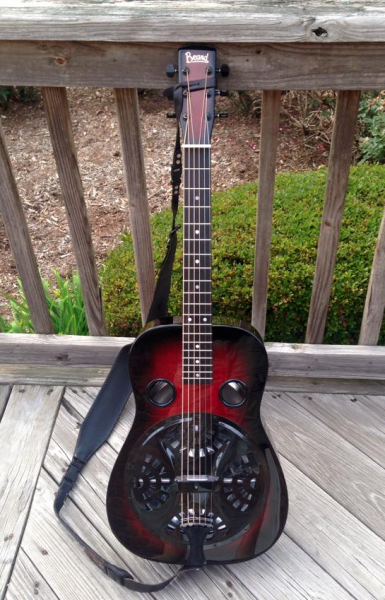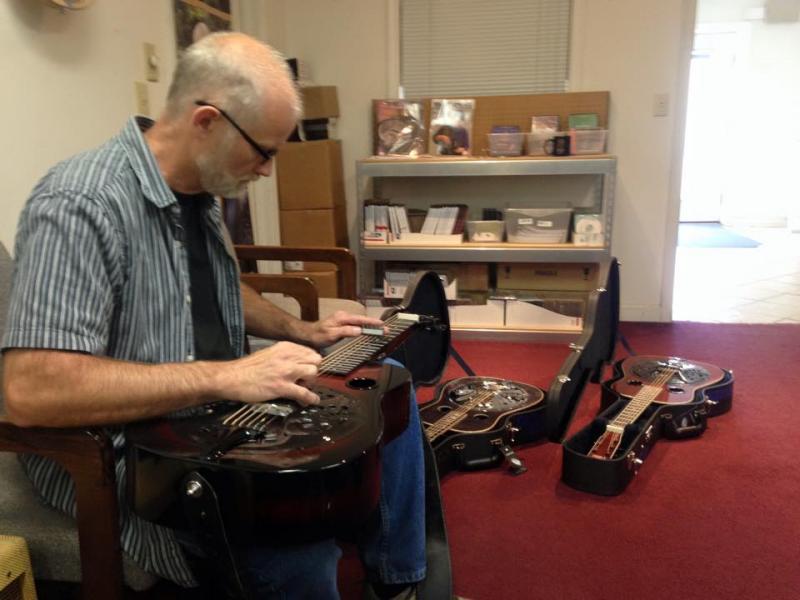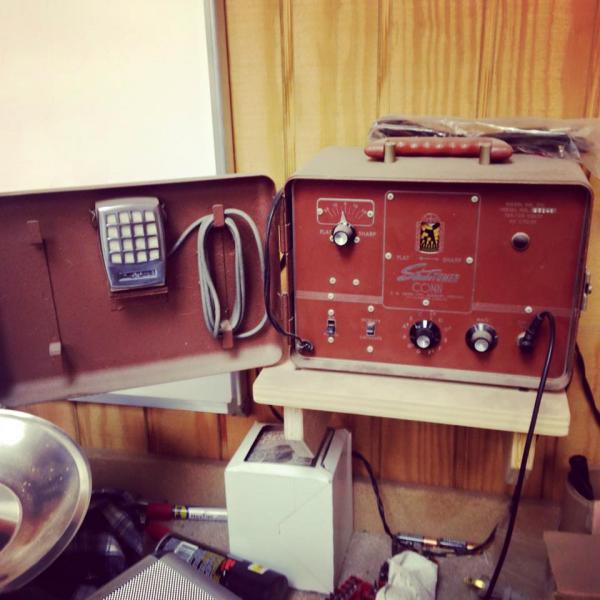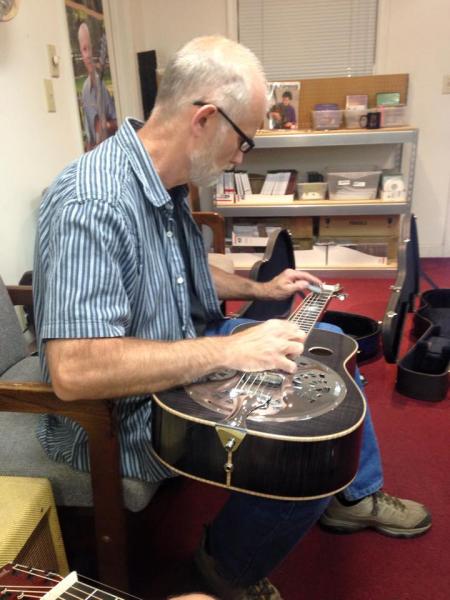Dobro Update from Andy Hall

It’s blog time again! I don’t consider myself a great blog writer, but it is fun to riff about different dobro topics. I thought seeing as I just got a new dobro from Beard Guitars I’d talk a little bit about tone. Obviously there’s a lot that goes into getting “good” tone. Technique and how you finesse the instrument being the most important. But here we’re going to talk about picks, wood, and things you can change to get certain tones.
Wood choice is a big one. Many modern resos are made of maple. Maple is a hard dense wood, and ends up having good high end, tighter bass response and lots of sustain. Those are all generally good things for dobro tone. On the down side maple can sometimes be too bright to my ear, and can have complex overtones that can clutter the sound. Mahogany is another common tone wood. It tends to not have quite as much sustain or pronounced high end. Mahogany is known for a balanced even tone without a ton of extra overtones. The down side to me is it can sometimes sound a bit dull. Rosewood back and sides and a spruce top is a common combination for flat top guitars, and has been used with resos for some time. Rosewood is known for rich bass response and a more complex tone, while spruce provides a liveliness and brightness in the high end.
Rosewood/spruce guitars tend to have good bass and high end, with less in the mid range. Historically dobros were made of laminates, and that’s the sound you hear from Mike Auldridge and early Jerry Douglas. The Beard Mike Auldridge model is made from laminate and has a round, tight tone. They tend to not be as loud, but can have a great sound. There are many other lesser used tone woods such as walnut, bubinga, and koa. They all have their own unique characteristics.
Body shape and style also has a significant impact on tone. Larger body guitars tend to have more bass. With more space inside the guitar longer wavelengths can be generated and hence more bass. Smaller guitars have less bass. The Regal style body or R body is a small body style based on the old Regal resonator guitars. Sometimes you’ll see these with F holes as opposed to round holes. They are smaller and lighter and so in some ways are easier to play. The old time dobro sound tends to be less bassy and so the Regal body can be good for that style/sound.

More recently builders have been making larger body guitars like a Beard E or a Scheerhorn L. These not only have more bass but tend to be louder. This can help in jam sessions where instrument volume is a plus. Over the years I’ve come to realize that more volume really only helps in acoustic jams, or un-miked situations. If you’re playing through a mic or on a record volume really isn’t an issue since it’s a controlled environment, and volume can be adjusted. Many people are surprised to hear Tony Rice’s guitar in person as it’s not particularly loud, but as we know sound beyond amazing on records being played by the master. So in the end, quality of tone seems to trump sheer volume except for loud jam sessions. 
Sound holes make a little difference. I did some tests on a microphone and recorded me playing with sound hole screens in and then out. Out definitely is a little more open and airy and to me generally better. Greater chance of dust bunnies or your banana bread falling into the dobro though. F holes apparently have a little more open surface area than standard holes and so in theory slightly more bass.
The cone most certainly makes a difference as well. Hand spun cones are more resonant the stamped cones for sure. I’ve seen both Tim Scheerhorn and Paul Beard spin cones and each end up with a slightly different outcome. Where each bend in the cone is placed makes a difference, as I’m sure the specific aluminum used. If you get a foreign made dobro chances are it has a stamped cone, and can really benefit from a spun cone.

As far as picks, that’s something to experiment with. I notice that when I play a dobro with a brighter tone my playing style adjusts to get the tone I want from it. On brighter guitars I might bend my picks more to soften the bright edge. I may also play a bit lighter. On warmer guitars I tend to straighten my picks a bit and may play a bit harder.
The type of picks you use and how they’re bent can make a big difference in tone so try some different setups.
I did just get a brand new guitar so I thought I’d tell you a bit about it. It’s a mahogany Beard E body. Essentially a “Blackbeard” with a few adjustments. The bouts are a little more rounded as per my request. I like a curvy look : ). Also the corners are more rounded. I love this look! But the big change is the second cone we put in the upper bout. Paul said he’s been wanting to try it so we gave it a go.

When I got to Paul’s shop he had three guitars for me to try. One was the mahogany which I have. He also made an all maple E and a Maple top and back, mahogany sides guitar. All sounded amazing. He had soundhole screens in the maple and was excited for me to try it. After playing it he asked me if I noticed anything. I told him it had more sustain and sparkle than almost any guitar I’d ever played. When he removed the sound hole screen I saw the second cone inside. Sneaky Paul! I ended up falling in love with the all mahogany, and we decided to put a second cone in it and see what happened. Sure enough, more sparkle and sustain. So now I play a guitar with 2 cones! Whoda thunk. If you have any comments or questions on this blog, feel free to leave them. Thanks all!
- Andy

Related Dobro Blogs:
- Lap Steel Guitar Vs. Dobro
- Dobro Tuning with Andy Hall
- Best Dobro Songs According to Andy Hall
- Talking Dobro with Andy Hall
- Dobro Lesson on How to Wear the Picks
- Dobro Lesson on Hammer-ons
Learn more about Lap Steel and Dobro Lessons at ArtistWorks with Andy Hall at http://artistworks.com/andy-hall.







Comments